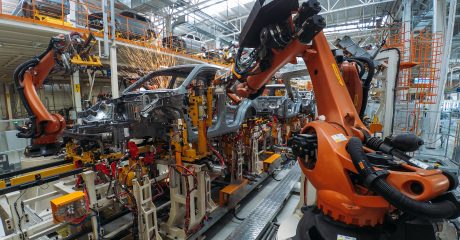The automotive industry has been automated for decades–though more recently it’s been advancing on the automation front. The production of vehicles is associated with large robots holding and moving parts as they are welded together. Now, the auto industry is adding more sophisticated robots, using 3D printing, and integrating other advanced technologies and techniques.
Automotive Manufacturing Techniques
Techniques used in the auto industry are becoming more sophisticated and engaging. The application of these methods and technologies have resulted in faster construction, cost reduction and improvements in efficiency. Some of these techniques include:
- Collaborative Robots: Robots were one of the earliest examples of automation on factory floors. The early stages consisted of robots doing more dangerous and repetitive jobs like lifting and welding. Using human workers to do these tasks were inefficient due to the restriction’s employees have. It was challenging for employees to operate weld guns and blindly reach across vehicles to weld spots, unable to see if they were good or bad. So instead, now you can take that employee and have them be responsible for a handful of collaborative robots. Implementing these robots was an easy transition, as they had the ability to work with existing manufacturing cells and operators. Today on factory floors, robots are increasing efficiency, reducing costs and much more.
- Injection Molding: This process is useful in the formation of parts of motor vehicles – currently this process is being applied in the construction of plastic parts. During the process molten material is injected into metal or steel cavities depending on the type of part. The molten material then takes on the shape, size, and configurations of the mold after cooling.
- CNC Machining: CNC Machining, also known as Computer Numerical Control Machining, is a technology that uses computers to control machines such as drill and lathes. It involves feeding a CNC machine with coded information that it uses to execute specific functions without human interference or direction. This automated technology has enabled faster production of products as compared to non-computerized machining. Not to mention this technology is cost-effective, more convenient, and has helped produce better looking and functioning products.
Improved Technology
The use of advanced computer systems in the auto industry has given rise to even better techniques in the manufacturing process. This transition from old tech to new tech has posed significant benefits from increased efficiency, to the ability to customize products. The technologies that are advancing include:
- Digital Manufacturing: This computer-based technique has enabled engineers to establish convenient manufacturing techniques to improve an already finished product. With this technology, producers can give accurate information on a multitude of things from the production period, to the durability of the upgraded product.
- Addictive Manufacturing: Addictive manufacturing is an automated process that applies layer after layer on the finished products. The use of this technique has cut costs and resulted in a faster production time.
- 3D Printing: This computer-controlled process uses 3D printers to manufacture parts layer by layer. It has enabled the production of digital models and products with complex shapes. 3D printing has helped make operations less complicated, more comfortable, and more updated.
Contact Custom Tool
Advancements in technology have resulted in better techniques that have improved the manufacturing process. Custom Tool is always looking to make improvements for our customers. To learn more about how we can help you, contact us here.
